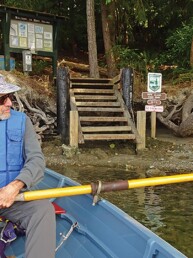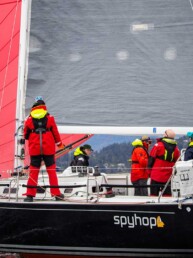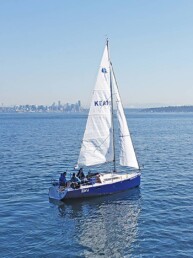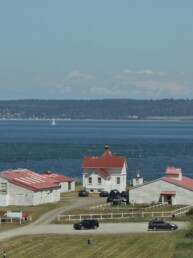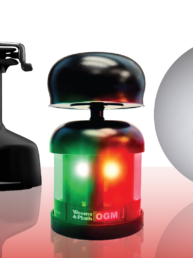The natural ambiance of Hope Island provides a mariner’s sanctuary
From the January 2021 issue of 48° North.
Standing with my little rowboat on the mainland shore, I stare out across the still black water toward Hope Island’s conifer-studded dome, barely a mile distant. Though the water appears placid, I know that deep beneath the surface lies a churning current, now merely at rest. By the time I’m halfway to the island, scores of translucent jellyfish and stray pieces of bronze algae slide perpendicular to my course, pulled along by tidal streams that reach out from four nearby inlets.
From a bird’s vantage point, Hope Island looks like the eye of an octopus, the many channels and passages of the south Salish Sea forming its arms. Without fail, it’s here that I start my boating year.
The seamanlike way to plan a trip to the island is to check the tides, in order to avoid fighting a current — or at least to show up at high tide, sidestepping the chore of hauling your boat over the sharp, barnacle- encrusted rocks that lie in exposed subtidal areas. But I simply go to Hope when the mood strikes me, even if that means wrestling with the current or hauling my boat over the cobbles on its cart. I like to savor the full experience, with all its unnecessary exertions, before I set foot on shore. That way, I feel I’ve earned the right to experience Hope.
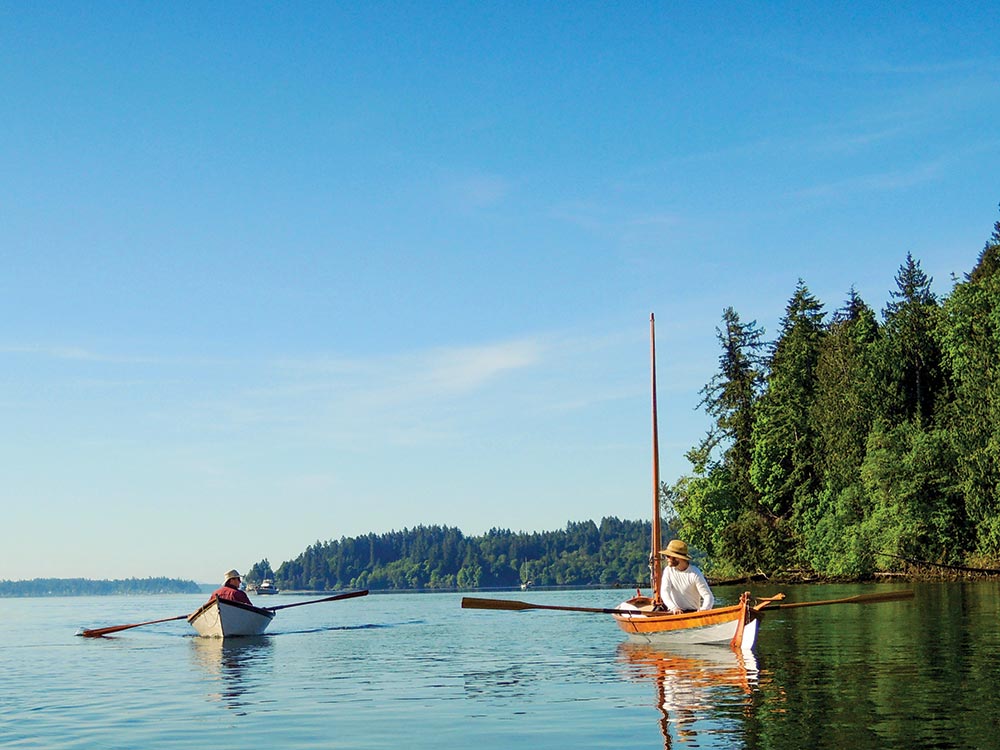
The island is ringed by numerous beaches; sand, cobble, shell, and combinations thereof, each connected to the upland with footpaths; but I almost always land on the southern shore. Here a beach composed of crushed shells — likely a midden left by First Peoples in the area — produces a comforting, soft, but not unstable, sensation underfoot. The high side of the midden is fringed by blue-tinged pickleweed. Rising beyond the reach of the tide stands an odd plantation-like forest of conifers.
After hitching my boat to a post, I wander deeper into the island and find myself in a grove of trees so large that I must crane my neck to see the canopy far overhead. Always keeping the water to my right, I follow what could loosely be called a trail. It feels more like a natural opening in the woods, where there are simply fewer trees and shrubs, permitting a visitor to slip through. Gradually, I walk uphill, toward the north end of the island, where I’m surprised anew by the dip into a tiny valley studded with old-growth trees. I pause, pondering all that these ancient cedars and maples must have witnessed over the centuries, trying to gauge how far their roots must penetrate: surely deep enough to touch the saltwater below. It is utterly silent here; only a few dust motes flicker in shafts of sunlight piercing the branches above.
Starting back on the westerly side of the island, I note the forest’s gradual changes, relishing the dappled sunlight beneath a grove of young alders and a meadow of luxuriant grasses. The sun is out in full force as I approach a remnant apple orchard left by European homesteaders, its casually mown turf lending a park-like ambiance, inviting me to linger. I perch on a picnic table, gazing out toward the saltwater boundary of the island.
At 132 acres, Hope is small enough to be intimate, but large enough to feel like it will hold its own against a king tide or storm surge. Still, with its pear shape, it’s hard to get far from the water here. Birds, small children, and otters carry shells, crab claws, and fish parts a surprising distance into the interior. Cedar and fir cones litter the beach. The line between land and sea is stretched.
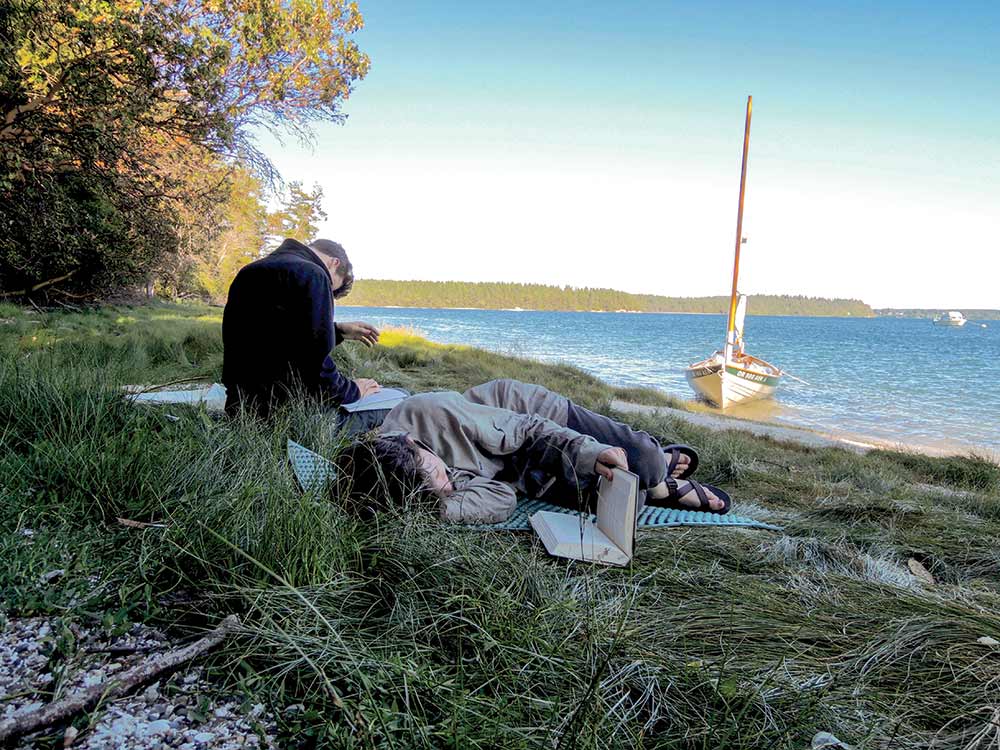 A small craft guy, I am at home here, where amphibious boats that can be hauled up and down the beach are more useful than deep-keeled craft. Although mooring buoys bob offshore, there’s no infrastructure for big boat sailors on Hope. Everyone must navigate the beach. We enter as equals.
A small craft guy, I am at home here, where amphibious boats that can be hauled up and down the beach are more useful than deep-keeled craft. Although mooring buoys bob offshore, there’s no infrastructure for big boat sailors on Hope. Everyone must navigate the beach. We enter as equals.
Despite the peace of the island, I’ve always felt vulnerable offshore, whether tied to a buoy or at anchor. One side is open to west winds; the other riddled with currents and exposed to the wakes of passing boats. I usually sleep ashore when I visit, but one night I decided to anchor on the east side. All was well at slack tide, but by midnight I awoke to the sound of a river rushing past my hull, and couldn’t help suspecting that I was somehow on the move. My boat seemed so slight against all that water, like a leaf caught at the end of a spider’s web. It rolled end to end, then side to side, inducing a nausea that persisted all night and left me with a lasting appreciation of Hope’s solid campground, despite its marauding raccoons.
As Covid-19 continues to upend the human world, Hope Island stands firm. The tide rises and falls, deer graze, crabs scuttle, trees grow. Now, in the dark of winter, I must have faith that we’ll all get through the challenges that lie ahead. Helping to motivate me through the darkness are thoughts of boating in the long days of spring, and the knowledge that one day, when the season turns, I will again row out to Hope Island, where our present troubles are just a blip in time, where the cycle of life continues unabated; the wildflowers will bloom once more, moon snails will hunt, and I will find peace in these waters again.
Bruce Bateau
Bruce Bateau sails and rows traditional boats with a modern twist in Portland, Ore. His stories and adventures can be found at www.terrapintales.wordpress.com

